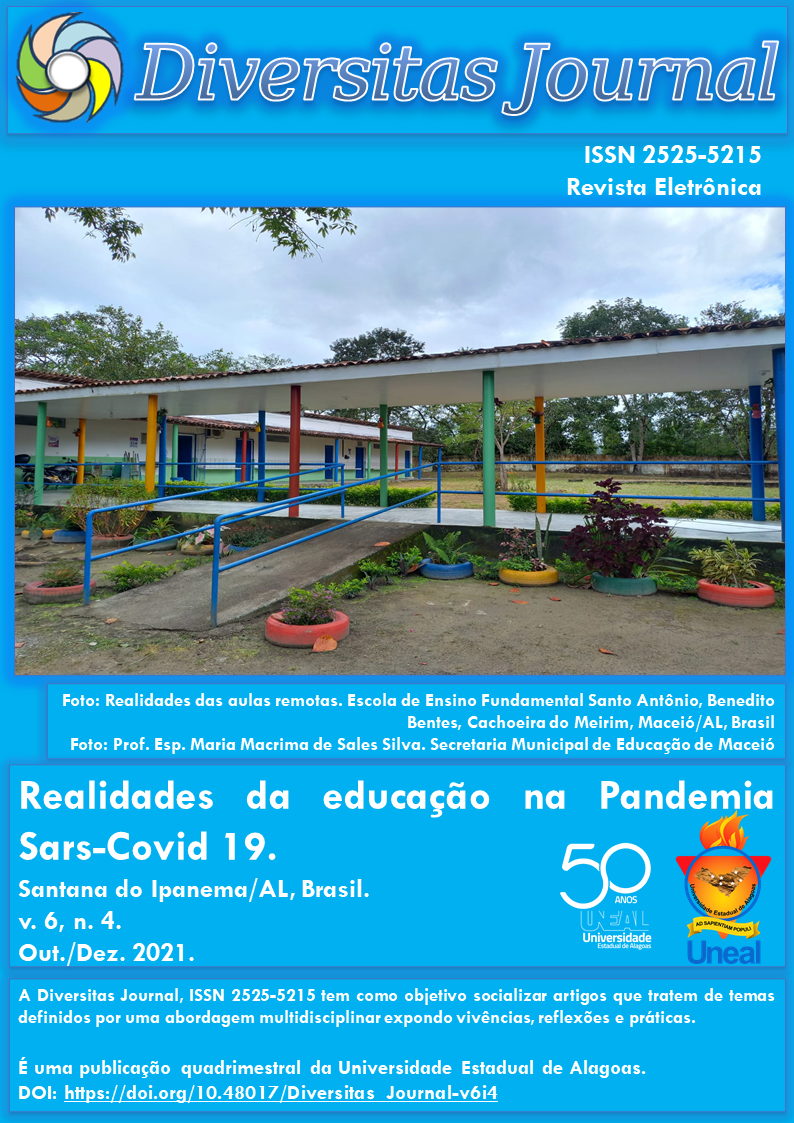COCONUT POWDER AND SAWDUST AS SUBSTRATE FOR COMPOSTING LIQUID SWINE MANURE.
DOI:
https://doi.org/10.48017/dj.v6i4.1977Abstract
This study aimed to compare the use of sawdust and coir dust as substrates for composting of pig slurry, aiming to give a destination to this waste produces a compound that can be used as organic fertilizer. We used a factorial experimental design with two treatments (sawdust substrate - TSE and coconut coir substrate - TCO) and four replications. We recorded the maximum and minimum temperatures of the compound daily and collected samples for chemical analysis of moisture, dry matter, carbon, nitrogen as well as the calculation of the C / N. During the experiment, the temperatures recorded varied widely among treatments with a minimum of 25 ° C and maximum 37 ° C. The humidity was very high TCO in treatment (70%) is considered unsatisfactory to the composting process. In treating TSE this value was 60% and the values of organic carbon and total nitrogen reached a satisfactory performance for composting as compared with treatment TCO. The C / N ratio reached acceptable levels between the two treatments (TCO and TSE) despite the differences in the levels of C and N in the two substrates.
Metrics
References
DAI PRÁ, M. A. et al. Compostagem de Dejetos Líquidos de Suínos. Série Documentos, n.45. Sete Lagoas: Embrapa Milho e Sorgo, 2005.
DIESEL, R.; MIRANDA, C.R.; PERDOMO, C.C. Coletânea de tecnologias sobre dejetos suínos. Boletim informativo Embrapa, CNPSA, 31 p., Concórdia, 2002.
GATIBONI, L.C. et al. Formas de fósforo no solo após sucessivas adições de dejeto líquido de suínos em pastagem natural. Revista Brasileira de Ciência do Solo, v.32, n.4, p.1753‑1761, 2008;
KIEHL, E. J. Manual de Compostagem: maturação e qualidade do composto. 3 ed. 171p. Piracicaba-SP, 2002.
KUNZ, A. et al.Tecnologias de manejo e tratamento de dejetos de suínos estudadas no Brasil. Cadernos de Ciência & e Tecnologia, v.22, n.3, p.651-665, 2005;
KUNZ, A. et al. Avaliação do manejo de diferentes substratos para compostagem de dejetos líquidos de suínos. Acta Ambiental Catarinense, v.5, n.1, p.7-19, 2008;
LI, L. M. et al. Effect of microbial consortia on the composting of pig manure. Journal of Animal and Veterinary Advances, v. 10, p.1738-1742, 2011;
MAGALHÃES, M. A. et al. Compostagem de bagaço de cana-de-açúcar triturado utilizado como material filtrante de águas residuárias da suinocultura. Revista Brasileira de Engenharia Agrícola e Ambiental, v.10, n.2, p.466-471, 2006;
MARAGNO, E. S. et al. O uso da serragem no processo de minicompostagem. Engenharia Sanitária e Ambiental, v.12, n.4, p.355-360, 2007.
OLIVEIRA, P. A. V.; HIGARASHI, M. M. Unidade de compostagem para o tratamento dos dejetos de suínos. Série Documentos, n. 114. Concórdia: Embrapa Suínos e Aves. 39p. 2006.
SEGANFREDO, M. A. Gestão ambiental na suinocultura. Concórdia: Embrapa Suínos e Aves, 304p, 2007.
SEDIYAMA, M. A. N. et al. Fermentação de esterco de suínos para uso como adubo orgânico. Revista Brasileira de Engenharia Agrícola e Ambiental, v.12, n.6, p.638-644, 2008;
STRAPAZZON, A. J. Avaliação da eficiência de tratamento de dejetos de suínos, utilizando um procedimento de compostagem misto em propriedade rural no Vale do Aquari, RS, Brasil. 2008. 64f. Dissertação (Mestrado) - Mestrado em Gestão e Tecnologia Ambiental, Universidade de Santa Cruz do Sul.
TIQUIA, S. M. Microbiological parameters as indicators of compost maturity. Journal of Applied Microbiology, v.99, n.4, p.816-828, 2005;
VALENTE, B. S. et al. Fatores que afetam o desenvolvimento da compostagem de resíduos orgânicos. Archivos de zootecnia, v. 58, p.59-85, 2009;
Downloads
Published
How to Cite
Issue
Section
License
Copyright (c) 2021 Claudineide Soares Neves, Thiago Lima da Silva, Gleicianny de Brito Santos, Márcia Nunes Bandeira Ronner, Arlene dos Santos Lima, Jailson Lara Fagundes , Marcos Cabral Vasconcellos Barreto

This work is licensed under a Creative Commons Attribution 4.0 International License.
The Diversitas Journal expresses that the articles are the sole responsibility of the Authors, who are familiar with Brazilian and international legislation.
Articles are peer-reviewed and care should be taken to warn of the possible incidence of plagiarism. However, plagiarism is an indisputable action by the authors.
The violation of copyright is a crime, provided for in article 184 of the Brazilian Penal Code: “Art. 184 Violating copyright and related rights: Penalty - detention, from 3 (three) months to 1 (one) year, or fine. § 1 If the violation consists of total or partial reproduction, for the purpose of direct or indirect profit, by any means or process, of intellectual work, interpretation, performance or phonogram, without the express authorization of the author, the performer, the producer , as the case may be, or whoever represents them: Penalty - imprisonment, from 2 (two) to 4 (four) years, and a fine. ”


















